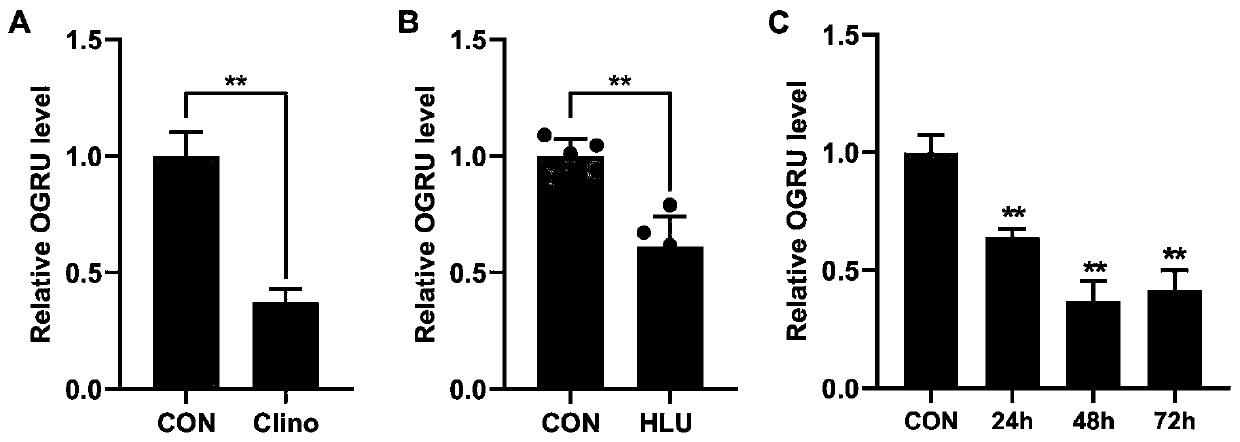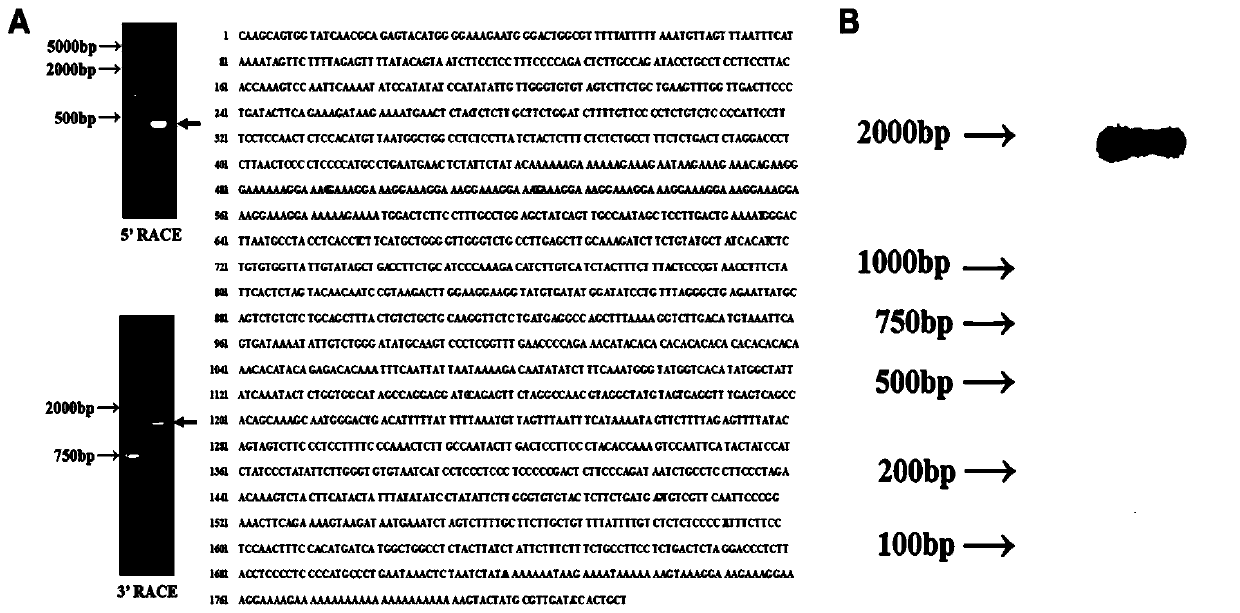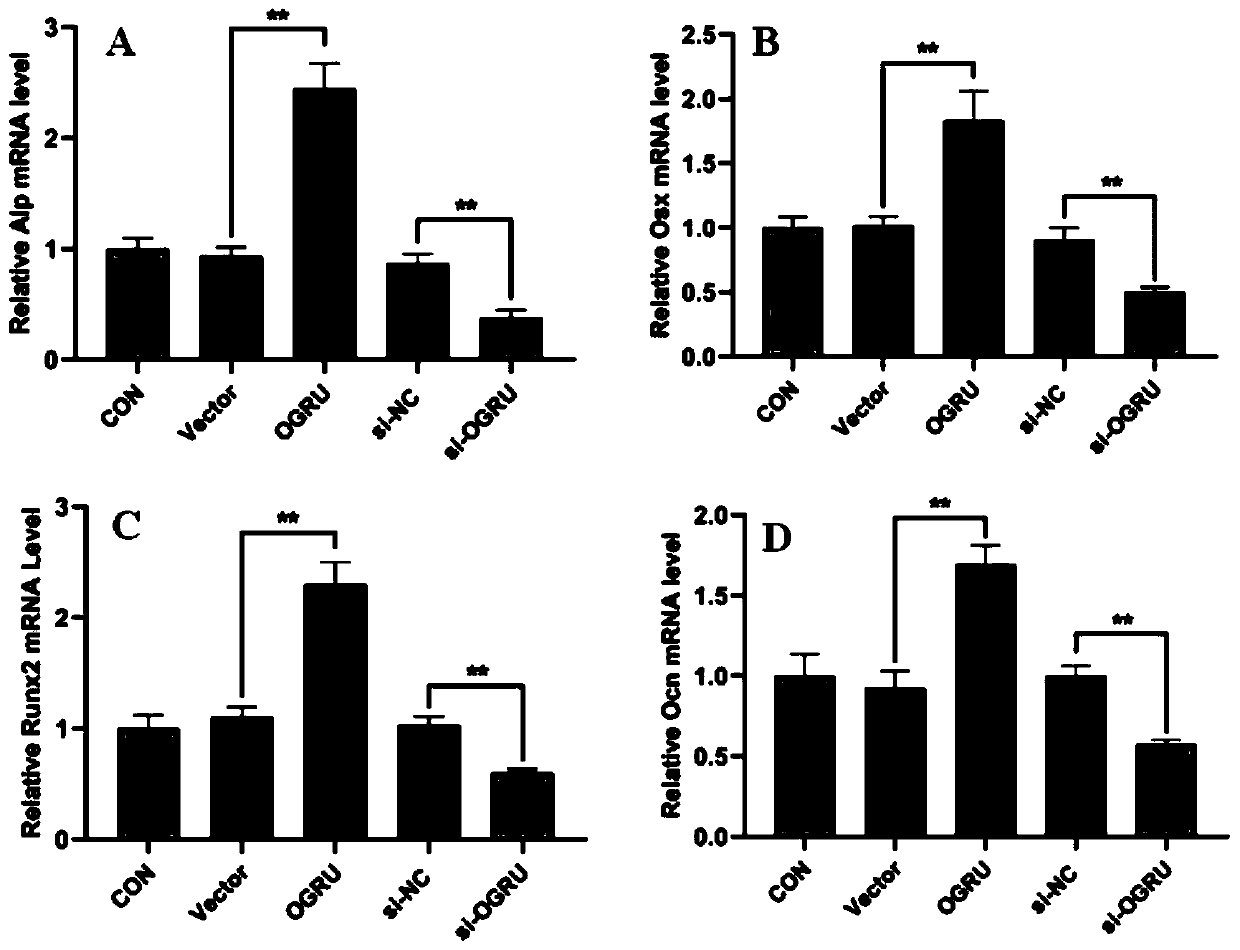lncRNA OGRU and drug use of lncRNA OGRU overexpression vector
A technology of long-chain non-coding and over-expression vectors, which is applied in the drug application field of disused osteoporosis drugs, long-chain non-coding RNAOGRU and its over-expression vectors, which can solve problems such as human health hazards and promote differentiation and mineralization ability, alleviating new bone formation barriers, good prospects for translational medicine
- Summary
- Abstract
- Description
- Claims
- Application Information
AI Technical Summary
Problems solved by technology
Method used
Image
Examples
Embodiment 1
[0048] To analyze the expression and characteristics of long non-coding RNA OGRU in 2D rotative MC3T3-E1 cell unloading model and hindlimb tail suspension (HLU) unloading osteoporosis mouse model, including the following steps:
[0049] Step 1. Establish a 2D rotary MC3T3-E1 cell unloading model
[0050] The MC3T3-E1 cells were subcultured into a rotary flask in an ultra-clean bench, and placed in a 37°C incubator for routine culture. After 6-8 hours of passage, the cells were completely adhered to the wall, and the spinner bottle was filled with α-MEM medium (Gibco, USA) containing 10% fetal bovine serum (HyClone, USA) and 1% double antibody (Invitrogen, USA), and stood upright. Place in a 37°C incubator overnight. On the second day, the air bubbles in the rotary bottle were completely exhausted in the ultra-clean bench. The gyratory group was installed on a 2D gyrator and rotated vertically with a gyration radius of 1.5 cm and a rotational speed of 24 rpm; the blank contro...
Embodiment 2
[0068] The OGRU overexpression vectors pcDNA3.1(+)-OGRU and siRNA-OGRU were transfected into MC3T3-E1 cells, and then their osteogenic differentiation and mineralization capabilities were detected, including osteogenic differentiation indicators (Alp, Osx, Runx2, Ocn) mRNA and protein expression, Alp activity, Alp staining and alizarin red staining etc., specifically comprise the following steps:
[0069] Step 1, Cell Transfection
[0070] Using Lipofectamine 3000kit (Invitrogen, USA), siRNA-OGRU or siRNA-NC (GenePharma, China; final concentration: 80nM), OGRU overexpression vector pcDNA3.1(+)-OGRU (GeneCreate, China; final concentration: 200ng / μL ) were respectively transferred into MC3T3-E1 cells, and a blank control group (CON) and an empty vector group (Vector) were set up, and subsequent experiments were performed as required. Among them, the sequences of siRNA-OGRU and si-NC are respectively shown in Table 3.
[0071] Table 3 siRNA sequence
[0072]
[0073] Step 2...
Embodiment 3
[0091] Investigate the effect of OGRU overexpression vector on the differentiation of MC3T3-E1 cells in the 2D rotary cell unloading model, including the following steps:
[0092] After MC3T3-E1 cells were transfected into the OGRU overexpression vector for 12 hours, they were placed in a 2D rotator to rotate for 48 hours, and then RNA and protein were extracted for subsequent qRT-PCR, Alp activity and western blot detection. The detection method was the same as in Example 2, and the detection results Respectively as Figure 9-11 shown.
[0093] Depend on Figure 9-11 It can be seen that the overexpression vector of OGRU can partially alleviate the differentiation disorder of MC3T3-E1 cells caused by 2D inversion.
PUM
 Login to View More
Login to View More Abstract
Description
Claims
Application Information
 Login to View More
Login to View More - R&D
- Intellectual Property
- Life Sciences
- Materials
- Tech Scout
- Unparalleled Data Quality
- Higher Quality Content
- 60% Fewer Hallucinations
Browse by: Latest US Patents, China's latest patents, Technical Efficacy Thesaurus, Application Domain, Technology Topic, Popular Technical Reports.
© 2025 PatSnap. All rights reserved.Legal|Privacy policy|Modern Slavery Act Transparency Statement|Sitemap|About US| Contact US: help@patsnap.com



